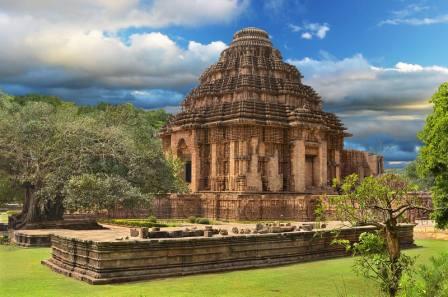Bhubaneswar: Notwithstanding the raging controversy over non-inclusion of Puri and Konark among India’s 17 most iconic tourist sites from the country, the data from the Ministry of Culture depict the popularity of Konark Sun Temple among Indian and international tourists.
The data from the ministry relating to the number of visits domestic as well as international tourists make to historic sites of national importance in the country claim that Konark Sun Temple is among the country’s top five most visited spots in India.
The data was also recently furnished by the ministry in a reply to a question on monument protection and revenues earned. As per the claim of Minister of State for Culture Prahlad Singh Patel, Konark temple in 2018-19 alone witnessed visits by 24.66 lakh tourists.
The data claimed that this was much higher than the visits made to Ellora Caves, Golkonda Fort, the Charminar or other famous monumental sites in the country. The only four historical monuments which saw more visits than Konark included the Taj Mahal, Red Fort, Qutab Minar and Agra Fort.
The ministry’s reply also claimed that the visits of tourists to Konark are increasing and so did the revenues with each passing year. According to the data, while 23.06 lakh visitors visited the site in 2016-2017 the numbers surged to 24.66 lakh in 2018-19 while the revenue from the visits also increased from Rs 6,74,41,610 in 2016-17 to Rs 9,36,58,160 in 2018-19.
The ministry claims that out of the 3,691 centrally protected monuments, 80 are from Odisha alone. There are 3,691 monuments/sites of national importance in the country. As per the existing policy of the government, the monuments/sites are declared protected under the Ancient Monuments and Archaeological Sites and Remains Act 1958 and are maintained and conserved by the Archaeological Survey of India.
In another reply in the Parliament recently, the ministry claimed that they have been taking adequate measures through the ASI to protect the monuments. The minister, in his written reply, has said that measures like chemical preservation to counter the effect of saline ingress as well as micro vegetation growth, effective drainage system to prevent water logging and plantation of trees around the monuments to check the effects of erosion, are taken to conserve the monuments.






































